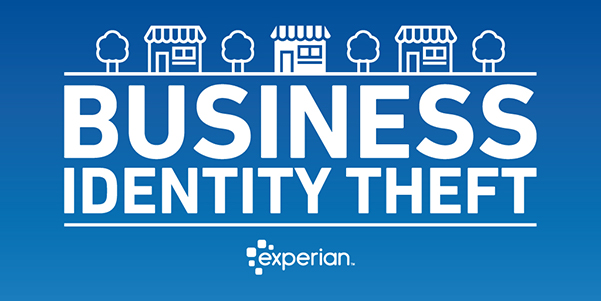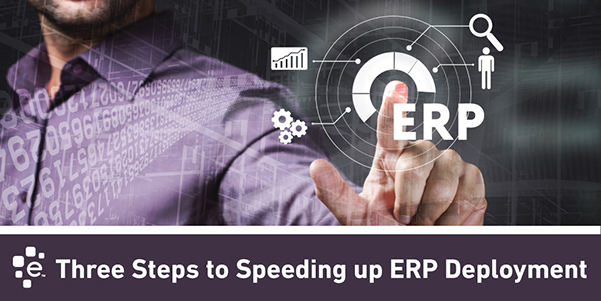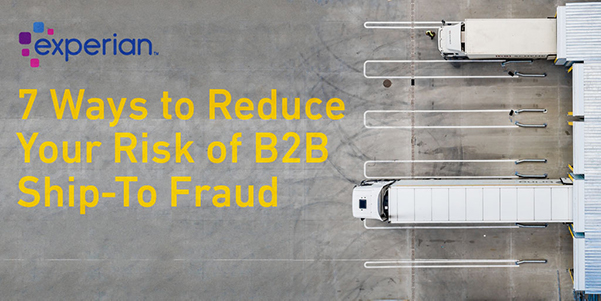eCommerce and Retail

You likely go to great lengths to protect your own identity from fraud and theft. But are you actively protecting your business’s identity as well? Even more importantly, do you make sure you are not doing business with fraudulent companies that have been victims of identity theft themselves? In many ways it’s harder to protect your business identity than your consumer identity. Information about most businesses is publicly available – and as easy to find as a simple Google search. Because businesses self-report much of their own information, it’s easy for a thief to add their name or address to a company. To make it even easier, many businesses do not protect their EIN the same way as they secure their SSN – which they should. At first glance, you may think having your personal identity stolen to be more damaging than a business identity. But in fact, the opposite is often true. Business owners often personally guarantee loans, even if the loan turns out to be fraudulent. And then if a business must close its doors due to the losses from the theft, the business owner now has no income and must repay the loan. How Business Identity Theft Happens Some thieves steal business identities by purchasing a shell corporation. Others take over a company’s data. But regardless of how the left happens, the criminals often go to great lengths to mirror the company. Some even rent space in the same building as the original company and using the same suppliers. At this point, the fraudulent company can start physically intercepting deliveries as well as applying for loans and credit, posing as the original company. Criminals start with one piece of information that is real, such as an address or EIN number. And then start operating as if they are the company and changing the data. Criminals often wait patiently while building up their reputation and credit history, then “bust out” with a large amount of fraudulent activity in a short period of time, and then walk away before they are discovered. Protect Your Own Business Identity Business owners must constantly monitor their business information to spot red flags that criminals have taken over. The earlier the theft is discovered, the less damage that occurs. Here are three things to look for to spot business identity theft of your own business: Look for new addresses added. Check your credit reports and government filings to verify the address. One of the first signs of theft is often a new address added to your business information. Verify that new registered owners have not been added. Thieves will often add a new principal — CEO, owner or partner — to the list of owners. The criminals can then conduct business as if they are an owner. Check business accounts daily. Use online banking — which also reduces the risk of stolen paper statements — to look for any transactions that you or your employees did not make. Consider setting mobile alerts for suspicious transactions to spot issues even faster. Verify Your Customers are Not Fraudulent Companies Before doing business with a company, do a business verification by making sure the company is who they say they are and not a and not a fraudulent company. Since verifications cost time and money, take each customer on a case-by-case basis regarding how deep to dig. If a customer orders $100,000 worth of computer equipment, you should do a more thorough investigation than for a business ordering a single $500 laptop. However, anytime you are extending a line of credit to a company, you should deep dive into a companies' history and data because you are taking on a high risk. Stacking loans is a common tactic – meaning companies take loans from multiple companies at the same time. Because many companies often verify customers by looking at their relationship with the business, they are verifying in a vacuum instead of seeing the entire picture. By using databases and tools that provide a holistic view of all activity, it becomes much easier to find the fraud. Here are five things to look for when verifying a company: Verify the EIN number. One scheme is to use a different EIN number and have all other pieces of information the same. Make sure the company you are doing business with is using the same EIN number as the legitimate company. Consider the number of open lines of credit. Because fraudulent companies often open multiple lines of credit at the same time, determine the current amount of open credit. Multiple large lines opened around the same time can be a red flag. Look at the number of sub-companies and activity between the companies. Criminals often set up a fraud ring by operating as sub companies underneath a single company. The “companies” then loan money to each other to boost credit scores and credibility. Note for periods of dormancy. When a business identity is first stolen, the criminals set up the company and then go dormant to build credibility through age. The company will then “bust out” by making a lot of transactions very quickly with multiple companies. Look for additional addresses. Check to see if the address you have been given is the same as the company’s headquarters. Multiple similar addresses can be a red flag. As business identity theft continues to rise, you must keep your eyes open for signs of theft — both with customers and your own business. A single credit check or google search simply isn’t enough. You owe it to your business and your future.

Your company is dependent on many different people — customers to buy products, employees to provide excellent customer service, and vendors to provide services. However, it can be challenging to have an accurate picture of all aspects of vendor relationships. By having clean and connected vendor data, you can more quickly deploy Enterprise Resource Planning (ERP) software. Challenges of Knowing Your Dependency on a Single Vendor Because departments often make their own vendor contracts — hardware, services, office supplies — the relationships are typically not stored in one place and often are in siloed databases. Human resources, marketing and product development could all have independent contracts with the same cloud-software provider for file sharing, and not be aware of the other relationships. It becomes even more confusing because vendor contracts for the same company may have different addresses for satellite locations. Human error also comes into play with typos in addresses and company name spelling mistakes. Companies may merge with each other. Or an office may move to a new location. This makes it challenging, if not impossible, to see a clear picture of your entire relationship with each vendor. Why Vendor Dependency Matters When you know your dependency on a vendor, you can understand your risk and better negotiate volume discounts. If a vendor that provides 45 percent of the materials needed to manufacture a specific product runs into supply issues or is facing serious financial issues, your company knows the impact from the start and can make alternate plans. You can also contact the cloud-software provider used by three departments and ask for preferred pricing based on an accurate number of users. If a vendor is also a customer, knowing your dependency lets you assess the balance of trade between the two companies, meaning how much you buy from the company compared to how much the company purchases from you. Correct vendor profiles are also essential for successfully using ERP. If the vendors are not connected or inaccurate data is imported, the ERP cannot show all relevant data for an organization in one place. You must start the ERP process with clean and connected data for ERP to improve the efficiency of your business and its resources. Otherwise, the deployment process takes longer, and you won’t get all the available benefits an ERP provides. Three steps to preparing vendor data for ERP deployment: 1) Clean your data. You must first clean your data for a consistent view of vendors across all files. Manually going through vendor files would be exceptionally time consuming and error-prone. By using Experian data and technology, you can quickly use databases of company information to correct errors and other issues in the data. 2) Enrich data for an accurate view of relationships. The next step is linking the businesses together across files and departments using a single unique Identifier. Experian’s Business Identification Number (BIN) product, makes this process accurate and quick. Your company can then see a real-time view of current and past orders with each supplier. You can also add additional data, such as credit scores and other supplier-related data. 3) Create a company hierarchy. Even though all the contracts are technically with a single company, departments may be working with a specific division or location for their services. This becomes important if divisions are sold or reorganized. By using a tool, such as Experian’s Corporate Linkage product, you can link the companies into a corporate hierarchy to provide an even clearer view of the relationships. Start getting ready for using ERP software by cleaning, enriching and linking vendor data. The next time you see a vendor mentioned on the news — data breach, bankruptcy, scandal — you don’t have to wonder what it means for your company. With a few clicks, you’ll know your dependency and can start planning. To learn how Experian can help you clean, enhance and link vendor data to speed up ERP deployment, visit www.experian.com.

The lease for the $50,000 office equipment seemed like any other order at first glance. The customer passed the credit check without issues. But when the multinational corporation was unable to collect payment, it dug deeper and realized that the ship-to address was a residence. With more research, the business discovered that its “customer” had used stolen identity information to pass the credit check. Because the company did not use systems to check for fraudulent ship-to addresses, the fraudulent order was unnoticed and the company fell victim to ship-to fraud. Although only a handful of the company’s customer accounts were fraudulent, the company lost a significant amount of money last year because each account included large six-figure deals. What is ship-to fraud? In a ship-to fraud scheme, a criminal poses as a customer and presents a verifiable billing record, address and credit history. Companies often deem these criminals as credit worthy because their records are up to date and they have a good credit history. Often, the first few orders placed are for smaller items and the bills are paid on time, which increases the criminal’s credit limit. The criminal then places a significantly larger item and never pays the bill. Because the shipping address is a location unrelated to the actual business, the criminal can easily pick up the order and sell the goods. While ship-to fraud happens with consumer goods, the impact is typically more significant in the B2B world because the cost of the goods is higher. Also, most consumer goods are paid for before the items ship. However, B2B companies often extend lines of credit to customers or bill at set intervals, which means products are often shipped before payment. Keys to reducing risk Here are five ways you can help prevent B2B ship-to fraud at your company: Review your business application process. Most companies ask for headquarter information when determining the creditworthiness of a new business customer. However, many companies have products shipped to locations other than the headquarters. During the application process, capture all operating locations on the application. This makes it easier to determine which shipments are going to legitimate addresses and those that may be potentially fraudulent. Compare ship-to addresses with all operating location addresses. If a product is being sent to a location that was not listed on the business application as an operating address, there is a risk the purchase is fraudulent. The risk is even higher if there is large physical distance between the ship-to address and the customer’s operating and billing locations. Determine if the ship-to address is a freight forwarder or consolidator. If the ship-to address includes a container number, it is possible that the purchase is fraudulent. Criminals often use freight forwarders and consolidators to receive fraudulent purchases because it creates more anonymity for the fraudster. Check to see if the ship-to address is a P.O. box. Because most businesses don’t use a P.O box for product orders, a P.O. box used as a ship-to address should be a red flag for potential fraud. P.O. boxes are another way criminals anonymously receive purchases. Look up the address on Google. Put the address into Google and see if the business placing the order shows up in the search results. If not, look for these red flags: - A residence – Consider if a home-based business is likely to order the product. - A forwarding or consolidating business – Some of these types of businesses do not use container numbers in the address, which means physical verification is your best protection. - Property for sale – While shipments to properties on the market can be legitimate, this raises concerns because criminals often use vacant buildings as ship-to addresses. View the location on Google Maps. By viewing the photos online, you can get further verification that the address is an actual business. You can often get a feel for the area and see if there are a lot of vacant buildings or other red flags. Be sure to check the data on the photo to see if it was taken relatively recently. Empower employees to escalate potential fraud. Your employees are your first line of defense against ship-to fraud. They are the ones processing the orders, printing the shipping labels and packing the boxes. Train your employees on potential red flags and have a process to handle concerns. Encourage employees to pick up the phone and speak with customers to clarify any concerns about the address. If they aren’t convinced it’s a legitimate order, have a process for the employee to stop the shipment and escalate the issue up the chain of command. Many legitimate businesses and shipments may have a single red flag for ship-to fraud. However, when an order has multiple red flags, you should be especially cautious and delay the shipment until the shipment is proven legitimate. Because manually confirming all ship-to addresses can be time consuming, many businesses are now using automated solutions to flag suspicious orders. Your B2B company can save money and time by using a system to help eliminate ship-to fraud. By waiting to develop a process to prevent this type of fraud, your company risks becoming the next cautionary tale.

So you’ve created the perfect campaign with great creatives and an unbeatable offer. You deploy the campaign and sit on the edge of your seat waiting for all the leads to flood in. After a couple of days, you notice a couple of responses but nowhere near the volume of what you were hoping for, and you’re stuck asking yourself “why?” Here are a couple of hypotheses: 1.) the people you reached out to aren’t the right audience so they don’t care about your offer, or 2.) your target audience didn’t see your efforts because you used the wrong channel. The process of finding new business customers can be expensive and sometimes unpredictable, but it doesn’t have to be. Here are 3 tips to help improve your prospecting efforts: Tip #1: Define your ideal customer One of the most fundamental ways you can help grow your current customer base is to have a clear understanding of what they actually look like (or defining what they should look like). What’s their job title? What are their biggest business challenges? Are they web savvy? How do they prefer to get industry news? Addressing discovery questions like these allows you to better understand who you’re talking to and how to talk to them. Additionally, you’ll be able to use this profile to help you mimic your best customers and target look-a-likes. Tip #2: Target new businesses Get your products/services in front of new businesses before your competitors. Not surprisingly, many marketers overlook targeting new businesses because of the lack of data -- how do you know a new company is in business? How do you know if they’re the right business for you to even target? Fortunately, there are many services in today's market that can help fill in the gaps. Using something like Experian’s US Business Database, which is a database of more than 16 million active U.S. companies, can help you discover new businesses sooner and beat out your competitors to reach them first. Tip #3: Find the decision-makers Identifying the right businesses to target is important, but ensuring that your offer gets in front of the right person – the decision maker – is even better. By finding the decision maker and directing your marketing efforts towards them, you can rest assure that your message lands in the hands of the person that matters most. Want to take it one step further? Once you know who you’re talking to, you can tailor the message and offer to be more relevant for that specific audience, which ultimately helps increase your chances of getting a response. Finding and reaching new business customers can be a daunting and expensive tasks, especially if you don’t target your prospecting efforts. Be sure to keep these tips in mind when approaching your marketing strategy and don’t let today’s data challenges hold you back. Learn more about Experian's US Business Database or our other marketing capabilities.

I had the pleasure of speaking with Kelly DeBoer recently. She is a Product Manager at Experian working in Business Information Services. Kelly leads product strategy for our business marketing products. In this Business Q&A we talk about B2B marketing trends and how Experian is helping business clients get the most out of their marketing initiatives. Gary: B2B marketing has changed significantly in the last five years. What are some of the important trends that you're seeing? Kelly: What we're seeing in the B2B space is really what we've seen in the B2C space for years, and that is, our clients are really trying to gain as much insight into their not only existing clients but potential clients as well? So you know additional firmographic information, credit information, anything that gives them a fuller picture of their clients, and then not only how to retain their existing clients and cross-sell, but also in terms of prospecting, how to best reach these targets once we've identified them what's the best channels to reach those prospects to get the best response. Gary: Kelly, most of our clients think of Experian Business Information Services as firstly business data and credit risk management. So how are we helping clients with their marketing initiatives? Kelly: With regard to B2B marketing, Experian has a tremendous amount of marketing assets including not only our U.S. Business Database which has over 16 million businesses. We also overlay that with our credit information, so clients can come and tap into this this huge resource to help them with their targeting in terms of selecting by firmographics, employee size, sales volume, as well as credit attributes, UCC filings, bankruptcies, information that can be translated to marketing campaigns. It can be utilized for direct marketing, for telemarketing, for digital applications - social media, email campaigns, analytical solutions, modeling. So it's a vast amount of resources that we can tap into to help with marketing campaigns. Gary: Can you share about some B2B marketing solutions we can look forward to from Experian? Kelly: Experian has a lot on the horizon with regard to B2B marketing. But one thing I'm particularly excited about is our new B2C linkage business to consumer linkage. Ultimately our clients have been coming to us saying you know, we're looking for a way to link our consumer records to any businesses that they may be associated with. So we create a customized linkage system that allows us to take in those consumer records, match them to our commercial repositories, and then provide back information that allows our clients to then not only target that consumer at their residential address but also their business address. So it gives them a chance to cross-sell and up-sell commercial offers as well as their consumer offers. Experian Business Marketing Solutions
